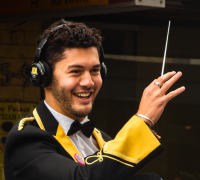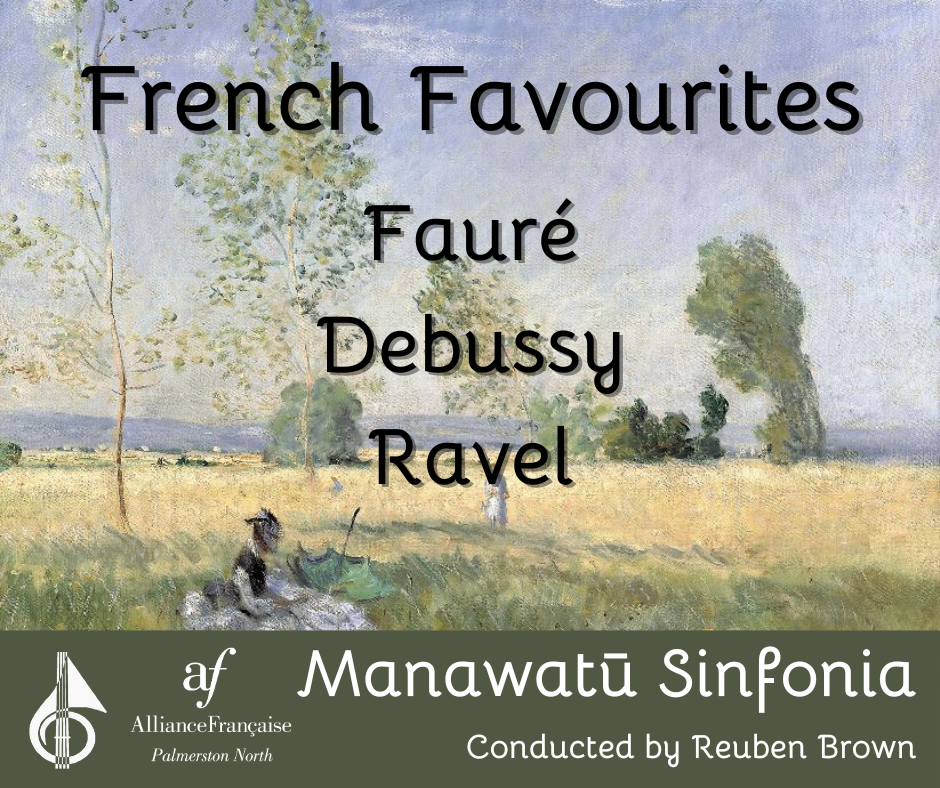Manawatu Sinfonia Sunday May 5th 2024, 2.30pm

TICKETS: https://www.eventfinda.co.nz/2024/manawatu-sinfonia-french-favourites/palmerston-north
Faure: Pavane
Faure: Pelleas et Melisande
Debussy: Petite Suite
Debussy: Prelude a l'apres midi d'un faune
Ravel: Mother Goose 5 pieces suite
Reuben Brown - Conductor
Hailing from the depths of the South Island, Reuben Brown has recently completed his Honours degree at Te Koki - New Zealand School of Music. Here, Reuben has pursued his passions for orchestral conducting and euphonium performance under the tutelage of Associate Professor Martin Riseley and euphonium artist Byron ‘Buzz’ Newton. He is now the Artistic Coordinator at Te Tira Puoro o Aotearoa - New Zealand Symphony Orchestra, assisting in current and future projects. Beginning in strong brass banding communities, Reuben has climbed the ranks with his playing and conducting, landing a euphonium seat with New Zealand’s premiere Wellington Brass Band. In 2021, he became the Band Manager and Assistant Musical Director (under David Bremner). Reuben has also been a member of the National Youth Brass Band since 2020 with both performance and administrative duties. He has recently been announced as the Assistant Musical Director for the National Secondary Schools’ Brass Band for 2022/23. In 2022, he successfully applied for and was awarded an NZSO’s Conducting Fellowship, working with the orchestra over sessions lead by Hamish McKeich and various visiting conductors.

How to join
Click here for details on how to join the Manawatu Youth Orchestra or the Manawatu Sinfonia.





